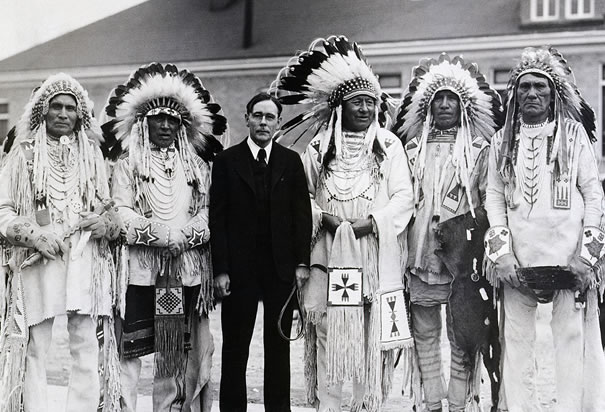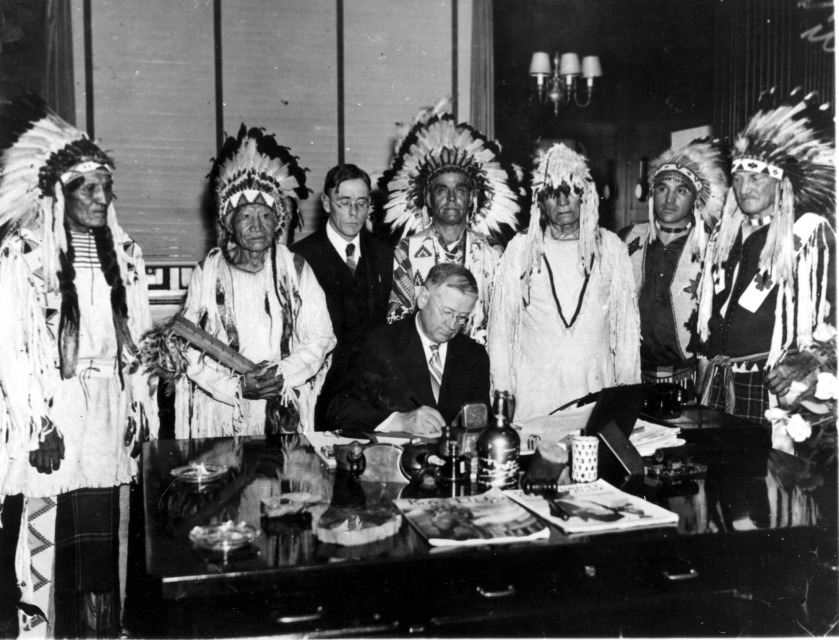 |
| Commisioner of Indian Affairs John Collier meets with South Dakota Blackfoot Indian chiefs in 1934 |
In a real sense, Embree was guilty of romanticizing the tribes he covered. The days of buffalo-hunting, pyramid-building, and trade wars of the eastern wood-lands were only misty memories when Embree wrote; he might better have written of the contemporary cultures of those tribes during the Depression years. But his period was a time of startling revision of the meaning and importance of culture. In such a period of flux, perhaps no one could blame Embree for seeking to represent culture in its traditional state of purity. by adopting this approach he was able to show the life-styles of the respective tribes and how these had politely bowed to the modern world but yet remained fundamentally untouched.
 |
| The Indian Orgamization Act of 1934 |
The important contribution of Embree's book was to assist in the defense of Indian tribal cultures and governments at a time when they sorely needed defense. The ensuing three decades have shown beyond doubt that the policies advocated by John Collier have been beneficial to Indian people. Today Indian tribes largely pay for their own governments out of tribal income developed under enterprises originally chartered under the Indian Reorganization Act provisions. The shrinking land base has been fairly well stabilized. With the social programs of the last decade initiated by such agencies as the Office of Economic Opportunity, the Area Redevelopment Administration (later renamed Economic Development Administration), and the Housing and Urban Development Department, Indian tribes have accomplished a great deal in bringing a decent standard of living to the people on the reservations.
 |
| Engraving of the American Indian town of Pomeiooc. |
 Twitter
Twitter Facebook
Facebook Flickr
Flickr RSS
RSS
0 comments: (+add yours?)
Post a Comment